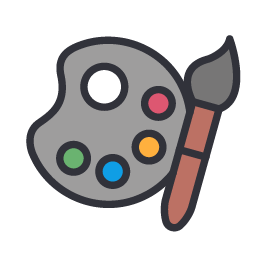You might think of drawing as just a skill or a hobby — something you do with your hands, a way to create images. But for those who practice regularly, it quickly becomes clear: drawing doesn’t just change what you create. It changes how you see.
It alters your perception of space, light, detail, and even emotion. It sharpens awareness, quiets the noise of modern life, and trains your brain to look beneath the surface. In this article, we explore the subtle but powerful ways that drawing transforms your vision — of both the outer and inner world.
Drawing Teaches You to Notice the Unnoticed
Before you learn to draw, you might walk past a building, a tree, or a face without really seeing it. But once you begin sketching, something shifts. You begin to observe the curves of architecture, the way shadows fall at different times of day, the tiny wrinkles at the corners of someone’s eyes.
Artists develop a kind of visual sensitivity — the ability to notice things others overlook. This isn’t just useful for making beautiful pictures; it’s a way of being more present in daily life. Drawing slows you down and trains you to pay attention.
You Begin to Understand Structure and Space
One of the biggest changes people experience through drawing is the development of spatial intelligence. Whether you’re sketching a cup, a cathedral, or a person, you begin to understand how form and volume work — how light defines shape, and how perspective creates depth.
This understanding starts to influence how you look at everything: furniture, city streets, your own hand. You start seeing invisible lines — axis, proportions, relationships — that define the way the world is built. And once you see them, you can’t unsee them.
You Become Comfortable With Ambiguity
Drawing doesn’t always go as planned. Lines don’t always behave. Proportions get messy. And yet, the process itself — uncertain, imperfect, evolving — becomes part of the appeal.
Artists learn to live with ambiguity. They discover that mistakes are part of the story, that “wrong” marks can lead to surprising beauty, and that the goal isn’t control, but exploration. This mindset gradually filters into other parts of life: work, relationships, decision-making. You become more resilient, more curious, and more willing to try.
Drawing Helps You Understand Yourself
When you draw regularly, you begin to notice patterns — not just in your lines, but in your thoughts. What subjects do you keep returning to? What shapes feel natural in your hand? What moods surface when you sketch late at night?
Your drawings become a kind of mirror. Even abstract doodles can reveal what’s happening beneath the surface — stress, joy, fatigue, hope. Over time, your sketchbook turns into a private journal made of color, texture, and intuition.
The World Feels More Alive
Perhaps the most profound shift is this: after drawing for a while, the world simply feels more vivid. Light seems richer. Faces become more expressive. You begin to see stories everywhere — in crowded buses, in cracks on the sidewalk, in birds on a wire.
It’s as if a layer has been peeled back. Drawing makes the familiar strange again — and in that strangeness, you find wonder.
Conclusion: Drawing Isn’t Just a Skill — It’s a New Way of Seeing
At Creative Drawing Studio, we teach techniques and tools, yes. But more importantly, we guide people into this way of seeing. Because drawing isn’t just about lines and shapes — it’s about waking up to the visual poetry of the world around you.
Whether you’re sketching daily or just starting out, know this: the more you draw, the more you’ll see. And the more you see, the more you’ll fall in love with the world.
Want to see the world differently?
Join one of our courses — and rediscover what’s been in front of you all along.

